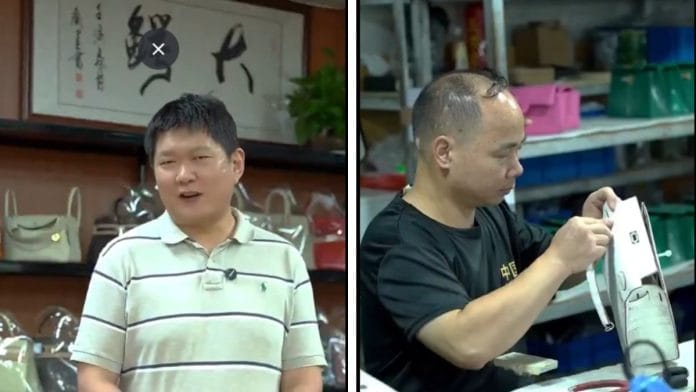New Delhi: As the ongoing US-China tariff war intensifies, Chinese TikTokers are stepping into the spotlight. They have assumed the role of digital whistleblowers, exposing how luxury handbags from Gucci, Prada, Louis Vuitton, Chanel, Fendi, and Hermès, among others, are predominantly manufactured in China—before being sold at extravagant prices in the US and Europe.
One video, posted by the TikTok account senbags2, has particularly captured public attention, amassing over 10 million views. In it, a Chinese factory worker declares, “For more than 30 years, we have been the OEM factory for most luxury brands—Gucci, Prada, Louis Vuitton.”
OEM, or original equipment manufacturer, refers to companies that produce goods for sale under another company’s brand.
“They take almost finished bags from China factories and just do the repackaging and logo installing,” the TikToker alleges.
“But I am not proud of the fact that we were only earning wages, while the actual profit margins for those making the bags were very low. What I am proud of is our quality control, craftsmanship, and fully integrated supply chain,” he adds.
“Now that the US and its European allies are trying to distance themselves from Chinese goods, do you think luxury brands are moving production out of China? Yes, they tried—but they failed. OEM factories outside China don’t have the same quality standards. Their workers are either too expensive or lazy, and they lack the supply chain infrastructure. That’s why we’ll always be the best OEM for luxury brands. So why not call us and buy directly?” he concludes.
Also Read: V is not for victory, but volatility—what is VIX & why are Trump’s tariffs roiling the ‘fear gauge’
Peeling back the illusion
As the United States strives to curb its reliance on Chinese manufacturing, several luxury labels have attempted to shift production to other countries. Yet, according to factory workers in China, these moves have largely faltered—due to elevated labour costs, inefficient supply chains, and inconsistent production quality in alternate locations.
Another TikToker pointed out that luxury fashion is not solely about exclusivity or status—it also acts as a subtle tool of soft power. Western supremacy in global pop culture—via Hollywood films, chart-topping music, and opulent branding—has fostered an aura of inherent superiority around Western-made goods. However, if most of those goods are produced in Chinese factories, the illusion begins to crack. “It’s like pulling back the curtain in The Wizard of Oz and realising there’s no real magic,” said one viral video.
“Factories outside China just can’t compete,” another content creator insisted.
“Their workers are too expensive or less efficient, and they lack the infrastructure we have spent decades building. That is why these brands keep coming back to us.”
According to data cited in a 2024 article by Torsten Sløk, chief economist of Apollo Academy (a free educational platform), average manufacturing wages in China amounted to just 20 percent of those in the United States.
In India, the figure was even lower—hovering at approximately three percent.
This stark disparity in wages underscores a broader critique: while Western luxury brands rake in massive profits under the guise of elite craftsmanship, the labourers who physically create the products see a disproportionately small share of that wealth. Chinese workers are now using digital platforms to turn the spotlight on this inequality—seeking not only better pay but also public acknowledgement of their skill and industrial excellence.
Not the first exposé
Even before TikTok creators turned it into an online phenomenon, several fashion houses had already come under legal scrutiny by Italian authorities for mislabeling their goods.
In June 2024, Dior became embroiled in controversy, while Louis Vuitton was placed under investigation for exploitative practices within its Chinese-run factories. Armani too faced similar allegations.
That same month, a court in Milan placed Christian Dior—under the LVMH umbrella—under judicial administration for a year. The ruling followed revelations that two subcontractors near Milan, both owned by Chinese nationals, were involved in severe worker exploitation.
Although Dior was not held criminally responsible, the court ruled it had failed in its duty to verify the working conditions and credibility of its contractors.
The investigation unearthed disturbing details: factory employees forced to sleep on site to ensure round-the-clock operations, disabled safety mechanisms on machinery, use of undocumented labour, and absence of formal employment contracts.






